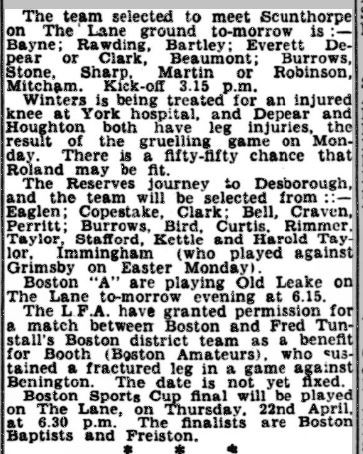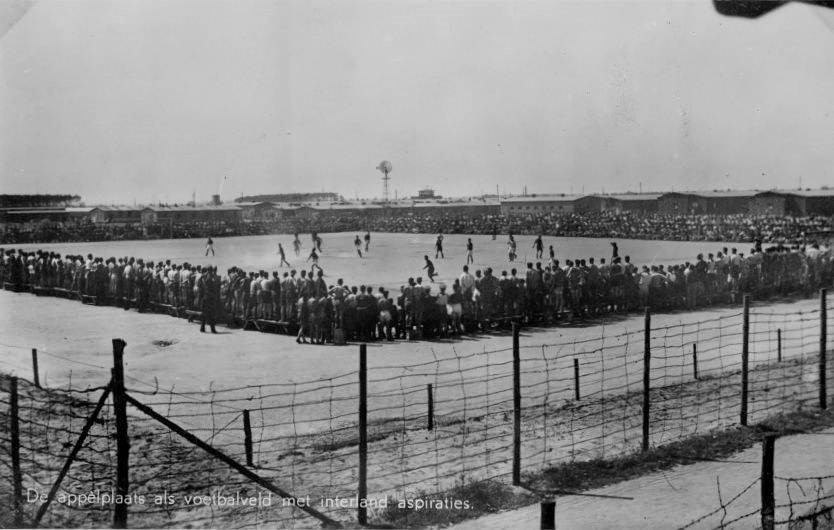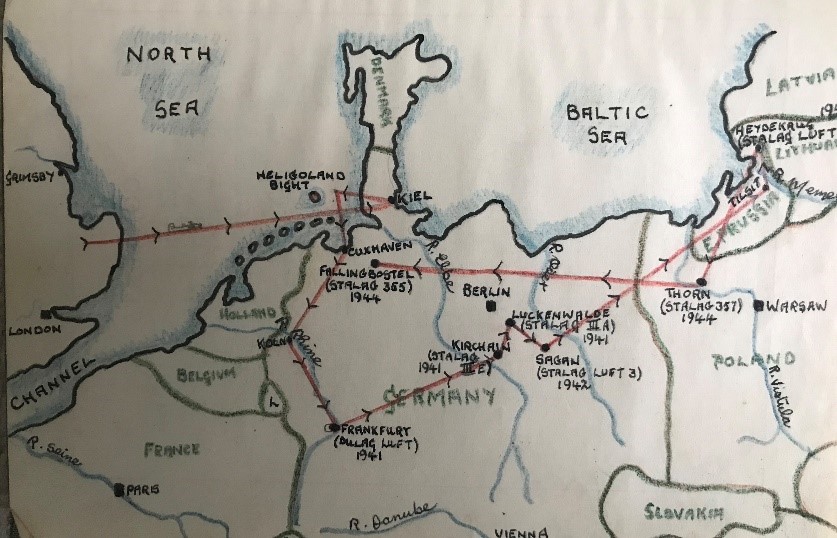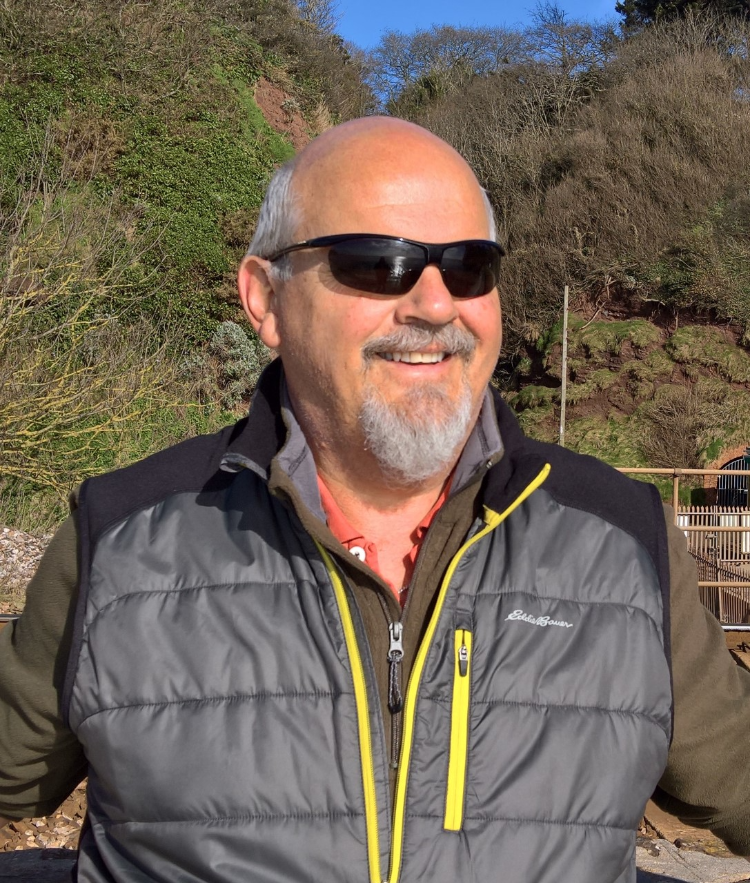Harold 'Spud' Taylor's Cup Final
26/04/2022 - 3.26
Roger Slater
While researching some information on footballers that had been Prisoners of War (I knew about Bert Trautmann, but almost nothing about British players captured and held overseas), and football played in Prison Camps I received an Auction Alert. The items to be auctioned were from Stalag IV-B and consisted of a Liverpool versus Newport County ‘Observer’ Cup Final Programme, a Runners-up Shield and Medal and a Cigarette Tin engraved with the names of players from one of the teams. It had all been the property of Harold ‘Spud’ Taylor, listed in the catalogue as a post war Grimsby Town player.
I bid and I won…

Source: Author's Collection
When the packaged duly arrived from the auction house in Hull, I gingerly opened it, then removed the programme to find both teams and officials listed inside, and each had signed the programme!
Two things happened. First, I searched the web for Harry Taylor. That went well! Nothing! Grimsby Town had no record (been here before I thought) but searching the British Newspaper Archive and local Lincolnshire newspapers I found an ‘H Taylor’ that played for Boston United, Immingham and finally, Grimsby Town Reserves! Success. Secondly, I also contacted the auction house and asked if they could pass on my details to the vendor as I wanted to know more about Harry.

Source: Lincolnshire Standard and Boston Guardian, 17th April 1948
Waiting in the slim hope of a reply, I listed each name from the programme, then magnified the signatures as best as I could to try and make out the initials. Some more distinct than others, with 25 or so names, the search began for military records and also among many football lists and databases to see if anyone else named had, ‘had a career’.

Source: Author's Collection
When I started, I thought I may find one or two names alongside Harold Taylor and I could write a little around the details of the camp and the match, intending that this would be a blog for the Football at War website. Perhaps just a taster to pique people’s interest and add a little to history.
Of the 25 names, 21 I was able to identify against Military and PoW records with some certainty, and another three I have options for. One, I was able to trace despite his surname having been listed incorrectly in the programme! (Lecke is actually Leck). Of those named, I also found five potential post-war professional footballers and at some stage, I’ll continue that research to try and find out if the Prisoners were indeed the post-war players.
An online Prisoner of War Database led me to a Stalag IV-B ‘Friends’ Association and their online records and also the Wartime Memories project. Checking the latter, I found mention of three of the prisoners listed in the Cup Final programme and I’ve emailed those families (including Leck) to see firstly if they are interested in what I know of their relations, and also if they can add anything more to what I know. As yet, none have replied, but Ill try and find the families and will write direct hopefully in the coming months.
On the Friends Association website, there is an excellent archive of pictures from the camp, including one showing a cup final (I can’t say if it’s our cup final, but there do appear to only have ever been two played in the camp) watched by a crowd of thousands.

Source: © N Uchtmann (Dutch Prisoner)
There is also a list of matches played in the camp between late 1942 and 1944 with teams. Not the ‘Hut Football League’ that was almost a daily programme of matches, but Representative Matches and the two cup finals. RAF v Army, London v The North and England, Scotland, Wales, South Africa, Ireland, Holland even Poland and Yugoslavia forming International teams for matches. In most cases these teams were made up of Hut team players, and their Hut teams were identified alongside their names.
Some of the better players are shown as playing for four or five different representative sides. R. Moss, the Newport County goalkeeper for example played for The Professionals, London, England, and The South.
Of those listed, two matches stood out as of particular interest. Both were Professionals v Amateurs, and I have to believe they were pre-war Amateur and Professional players. In Harry Taylor’s Cup Final, there were three players from the Professional side and two from the Amateur representative teams. Yet another path that I will research, though a more difficult one not only as Amateurs could be at any level, but also as pre-war, the records for professionals aren’t as readily available (there are in fact books listing all pre and post-war players in England and Scotland making at least part of the search easier!).

Source: Author's Collection
The records show results listed alongside the matches so I did find out that Newport County beat Liverpool by 2 goals to one. Newport’s scorers were Chapman and McCabe and Liverpool’s goal was scored by Herrett. After the match, the winners received a Cup and the Runners-up a Shield, each fashioned from the tins sent in Red Cross Parcels (as was the Cigarette Case) and the wood salvaged from a Red Cross crate.
There was a good meal provided to the teams from Red Cross food prior to an evening show prepared by the prisoners.
In truth though, I’d found very little about Harry, but an email arrived from a guy called Andrew Collins. He was the vendor of the items I’d bought and had responded to my request to the Auction House. What he had to say was a bit of a surprise and also quite exciting!
‘Spud’ Taylor was his uncle. The family didn’t have a lot more detail about his wartime or football experiences, but he was able to provide me copies of a couple of newspaper clippings, one, his obituary from August 1993 and another about his career as a successful local cricketer. I’m still searching but now do have a few details of his football career post-war as well, but that search goes on.

Source: Author's Collection
The remainder of the email added another story to this one.
Andrew’s Father was Warrant Officer Leslie W Collins, RAF, who was also captured by the Germans on 25th July 1941 and became a prisoner of war. Andrew’s email said “My father was very meticulous in his time as a POW. He recorded different things but mainly sport results within the camp in his Wartime Log. Dad was an accomplished cricketer and always said that one of his finest sporting achievements was representing England in the Test matches played within the camps against other countries.
Each Barracks formed football teams and were named after the top English sides at the time. Dad played for Wolverhampton Wanderers (Barrack 43) and there were league and cup matches. It’s ironic that I have been a Wolves fan for over 50 years.
I have attached some of the records my father kept on the scores and matches of the football and cricket games for your interest”.
Leslie kept a Wartime Log in what appears to have been a log-book provided to prisoners by The YMCA. The front page identifies that he was originally in Dulag Luft, then Stalag IIIE, Luft IIIE, Luft IV, Stalag IIIA then Stalag 357 and Stalag 355. There is also a hand drawn map of these travels across Germany dated for each move.

Source: Author's Collection
Alongside match records, I also have a copy of a certificate presented to Leslie as, as a representative of the RAF and England Teams that won the International and Inter—Services Soccer Cup in 1945 and copies of photographs from a PoW Sports Day at Stalag Luft 3 in 1942.
Both Harry and Leslie were repatriated in 1945 and returned home, later marrying sisters and joining their stories together…I’ll continue to research them and their teammates to see what else I can find!

Stalag IV-B The rugby pitch, top centre and football pitch, bottom centre. Source: Author's Collection
Stalag IV-B was one of the largest PoW camps in the expanded Germany during World War II. It was actually located at Mulhberg in Saxony.
It opened in 1939 and its first occupants were Polish soldiers captured in the 1939 German offensive. In May 1940 most of the Poles had been moved on and French prisoners arrived, then a year later British and Australians arrived. These were followed by Russians, New Zealanders, South Africans, Dutch and Americans.

The view from a Guard Watchtower in Stalag IV-B. Source: © German Official Photographe
Most of the Allied nations were represented by the time the camp was liberated by the Red Army on 23rd April 1945.
Biography
Roger Slater was born in Harrow in the late 1950s and has moved around a bit and retired to Devon with wife of 24 years, Helen. He originally trained as an Electrical Engineer but worked for almost 40 years in Building Services Technologies, primarily HVAC control systems and Electronic Security. Roger retired in 2018 having run his own Engineering Consultancy for almost 15 years.
For relaxation and hobbies, he writes, mainly about his football club, Wealdstone FC and has published eight books including a club history since 2002. He does not class himself as a historian, just an enthusiastic amateur.
He also writes for a fanzine/magazine called Where’s The Bar that has just relaunched.
Otherwise, hobbies are upcycling and building ‘strange’ lighting out of people’s rubbish and occasionally painting, though he also buys and sells at auctions and on the internet (mainly football related or antiques).
In respect of other sports, he will watch most but follows the Toronto Blue Jays avidly in baseball, as a result of working on and off in Canada in the early nineties.
Roger also reads and collects books on World War One, in particular personal biographies and war diaries as opposed to battle histories…
All of that could change tomorrow or on any other day if something else takes his fancy as he will give most things a try if they appeal!



/prod01/wlvacuk/media/departments/digital-content-and-communications/images-2024/240624-Alumni-Awards-2024-Resized.jpg)
/prod01/wlvacuk/media/departments/digital-content-and-communications/images-18-19/220325-Engineers_teach_thumbail.jpg)
/prod01/wlvacuk/media/departments/digital-content-and-communications/images-2024/240627-UN-Speaker-Resized.jpg)
/prod01/wlvacuk/media/departments/digital-content-and-communications/images-2024/240320-Uzbekistan-Resized.jpg)
/prod01/wlvacuk/media/departments/digital-content-and-communications/images-2024/240229-The-Link-Resized.jpg)
/prod01/wlvacuk/media/departments/digital-content-and-communications/images-2024/240627-Lady-Aruna-Building-Naming-Resized.jpg)